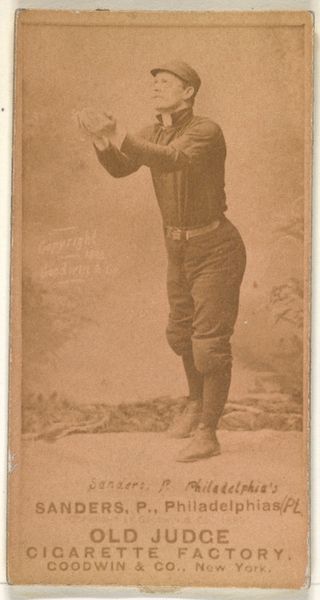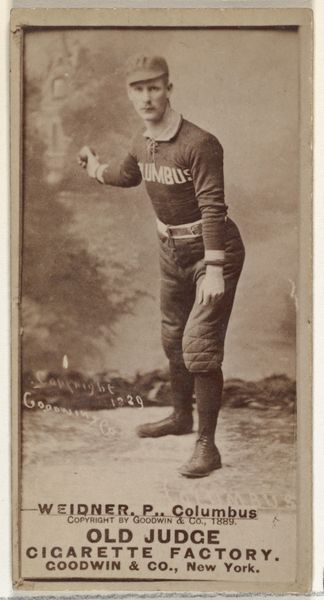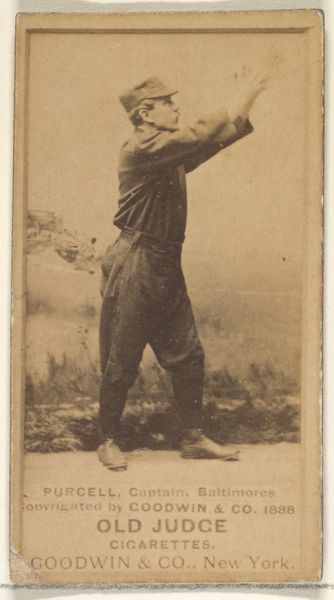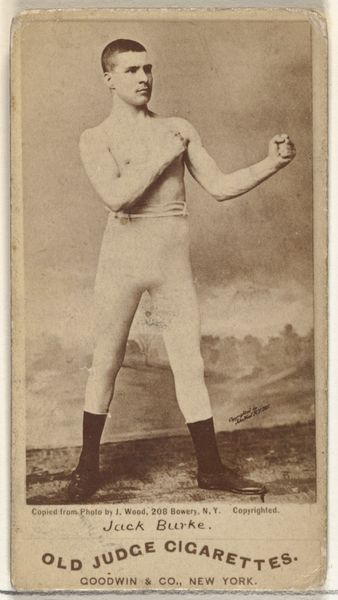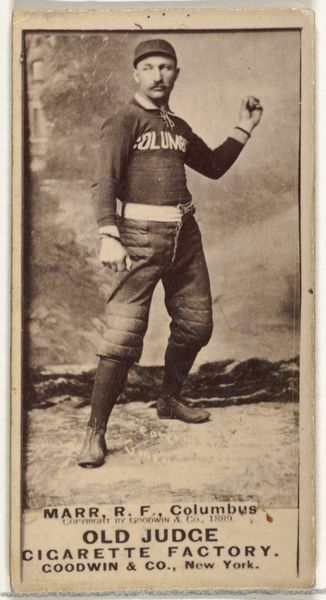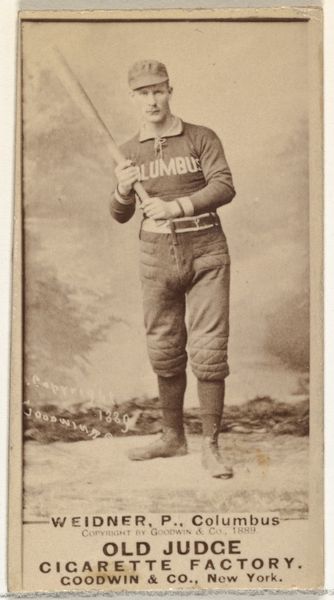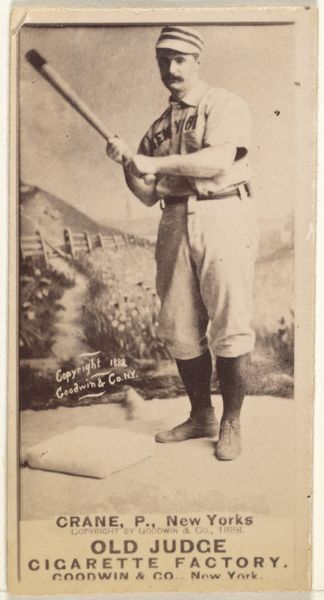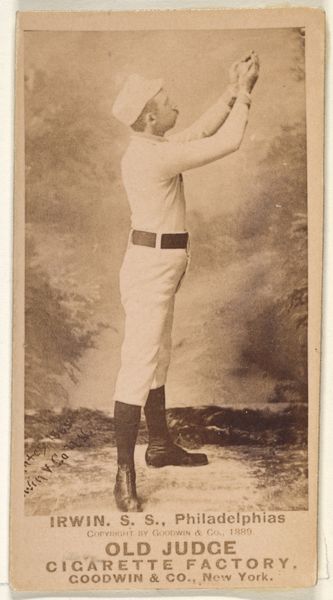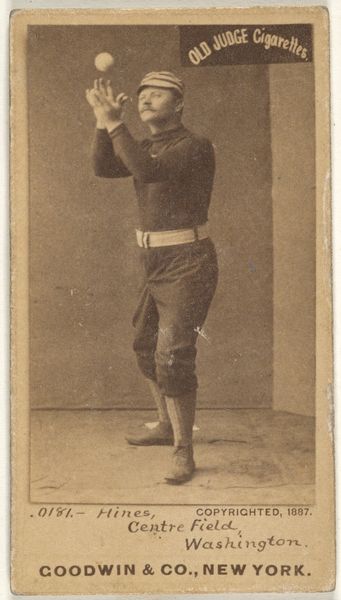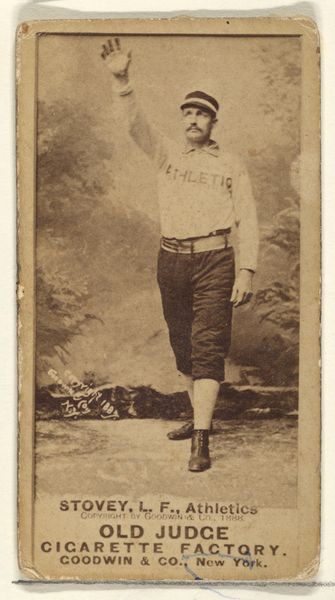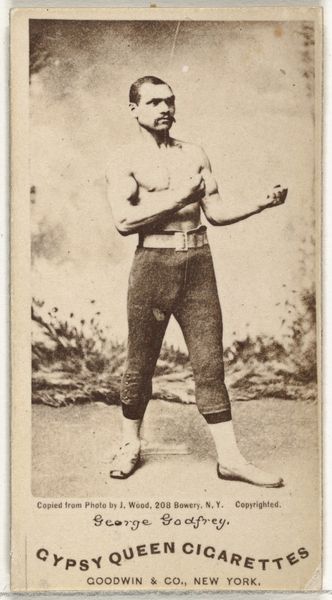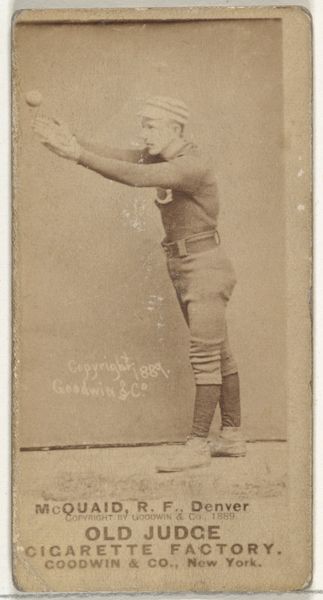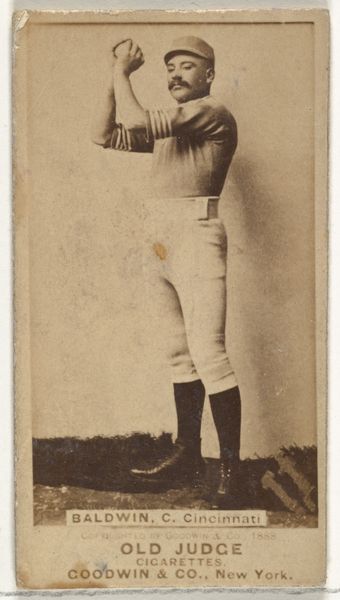
Charles W. "Lefty" Marr, Right Field, Cleveland, from the Old Judge series (N172) for Old Judge Cigarettes 1889
0:00
0:00
drawing, print, photography
#
portrait
#
drawing
# print
#
baseball
#
figuration
#
photography
#
men
#
genre-painting
#
athlete
Dimensions: sheet: 2 11/16 x 1 3/8 in. (6.9 x 3.5 cm)
Copyright: Public Domain
Curator: This striking print from 1889 depicts Charles W. "Lefty" Marr, a right fielder for Cleveland. It’s part of the "Old Judge" series, N172, produced by Goodwin & Company for Old Judge Cigarettes. The piece captures a portrait of the athlete, firmly rooted in its era. Editor: My first impression is that this portrait seems rather staged, even for the period. There is an artificial quality to the pose and the backdrop. The lighting is quite even, flattening the figure. I almost feel like he is waiting, caught mid-action, and frozen in time. Curator: You are right. This photograph served commercial interests, appearing on cigarette cards. Goodwin & Company used these cards to promote their brand and popularize baseball. What we see here isn't necessarily a candid action shot, but a constructed image designed for mass appeal. How might it be a symbol of race or identity? Editor: The figure embodies a specific form of masculinity prominent at the time – that of the strong, working-class sportsman. These cards contributed to the construction of an idealized American identity, subtly weaving together athleticism, patriotism, and the consumption of tobacco, it presents a particularly insidious kind of cultural commentary. What are we supposed to infer about baseball by seeing it juxtaposed next to "Old Judge" on a baseball card? Curator: Precisely. And we have to consider the social context in which these cards circulated. The late 19th century was a period of significant social change, immigration, and industrialization, all reflected within our social memory. Images like this one helped to reinforce dominant cultural norms while simultaneously shaping consumer desires and national identity, and these were consumed within specific public roles for men and baseball fanatics. Editor: Also, the very fact that this image survives as a work of art forces us to reflect upon the values our society instills. We place this image into a museum or cultural institution, elevating a commodity advertisement into a social and art historical artifact, with layers of complicated issues around consumerism and hero worship. Curator: Indeed, this image presents a fascinating intersection of art, commerce, and social history. It’s a reminder of how popular culture and advertising have historically shaped our perceptions of identity, sport, and nationhood, even within such a seemingly innocuous form as a baseball card. Editor: Examining this print invites us to critically reflect on the ideologies embedded within visual culture, past and present, including our ideas about gender roles and public figures. I mean, can anyone ever imagine advertising an item, regardless of how bad it is, in the form of athletes these days?
Comments
No comments
Be the first to comment and join the conversation on the ultimate creative platform.
